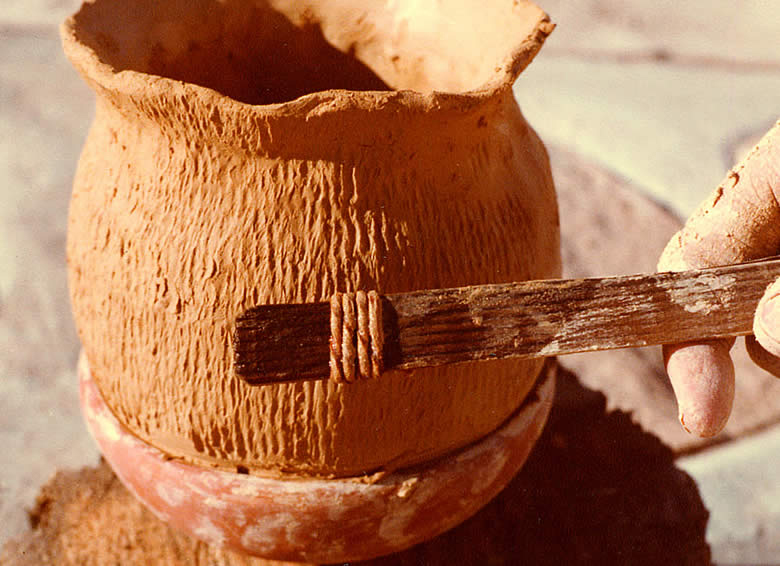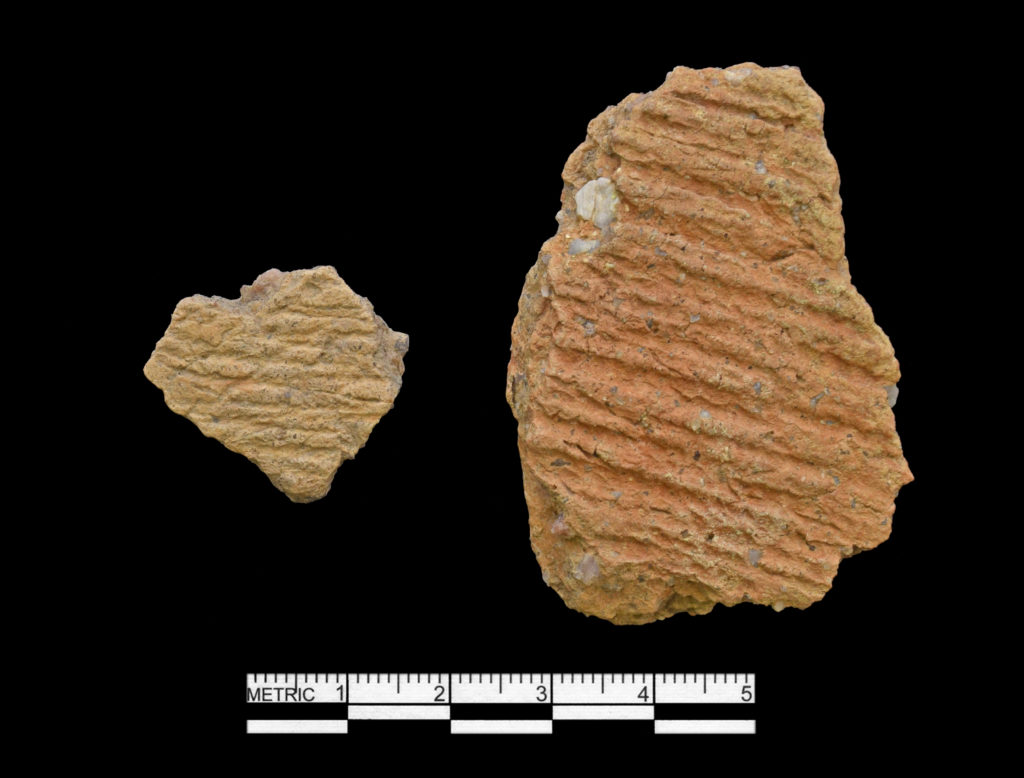Featured Fragment – Prehistoric Pottery Shred
By Dr. Mike Klien
In honor of Archaeology Month we would like to highlight this sherd of prehistoric pottery recovered by Dovetail during a survey in Southside, Virginia. This Albermarle-type prehistoric pottery has large inclusions of crushed quartz and has an impressed design on the exterior. The design was created with cords that were wrapped around a wooden paddle to create the textured surface. These characteristics indicate that it was manufactured between about 600 and 1200 A.D. It is difficult to say much more about a single sherd, but when numerous sherds are recovered from an archaeological site, pottery provides insight into the lives of the women who made the pots (as ethnographic research has shown that woman made most of the native pottery) and social relations within and between communities. The visibility of the attributes of the pots and the importance of pots as tools for cooking and storage are keys to interpreting pottery, and hence past societies.
The temper, the rock or shell that makes the clay more workable and reduces the likelihood that the pot will crack during manufacture or use, provides information about where the pot was manufactured. For example, oyster shell occurs only near the coast, while limestone is widely available in the Shenandoah Valley, but less common east of the Blue Ridge Mountains.
The twist direction of the cords used to impress the pot, difficult to see in the pot itself and even in the cords without close inspection, is, like the way a person ties shoelaces, generally learned and not changed over the course of a life. Therefore, the twist mark provides insight into learning networks within and between settlements.

Image Showing Use of Wooden Paddle to Create Cord-Marked Impression on Pot (Texas Beyond History 2016).
Measurements of the curvature of the sherd reflect the size and shape of the pot. For example, straight walls, particularly near the rim, occur on wide-mouthed jars. In contrast, a narrow neck reduces ease of access, but enhances boiling for soups and stews, similar to putting a lid on a cooking pot. If charred remains occur on the sherd, the foods cooked in the pot can be identified, and radiocarbon dating (a way to determine the age of organic objects) can provide a relatively precise estimate of when the pot was manufactured and used.
Elaborate decoration typically occurs only on the rim of pots. Because there is no functional importance of the decoration, examination of decoration on many pots serves as a window into social relations within individual communities and across regions. So, while fragments of pottery are often grouped together and used to estimate the date of sites, close analysis of the individual attributes can provide insight into many aspects of life in societies.
For more detailed information on the manufacture and use of similar pots, visit these websites:
https://www.texasbeyondhistory.net/villagers/cordmarked/
https://www.jefpat.org/diagnostic/PrehistoricCeramics/index-prehistoric.html
Any distributions of blog content, including text or images, should reference this blog in full citation. Data contained herein is the property of Dovetail Cultural Resource Group and its affiliates.
References:
Texas Beyond History
2016 Making Cordmarked Pottery. https://www.texasbeyondhistory.net/villagers/cordmarked/images/cord-main2.jpg, accessed October 2017.

